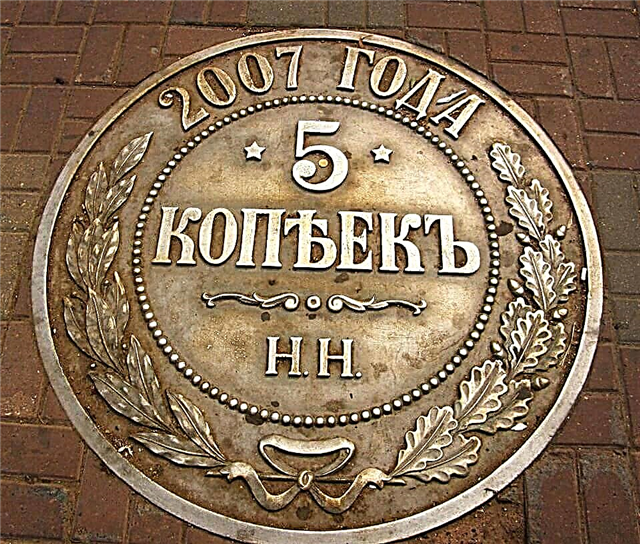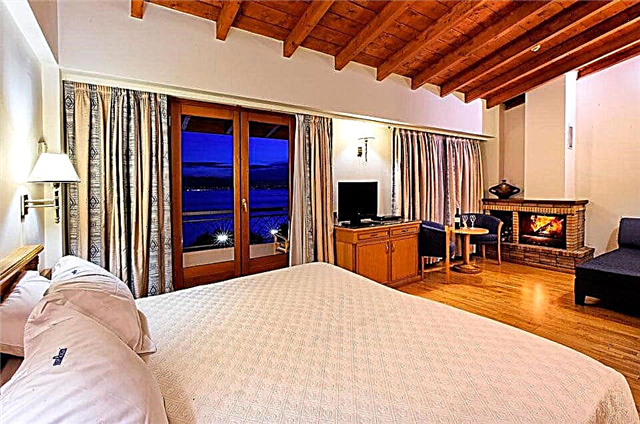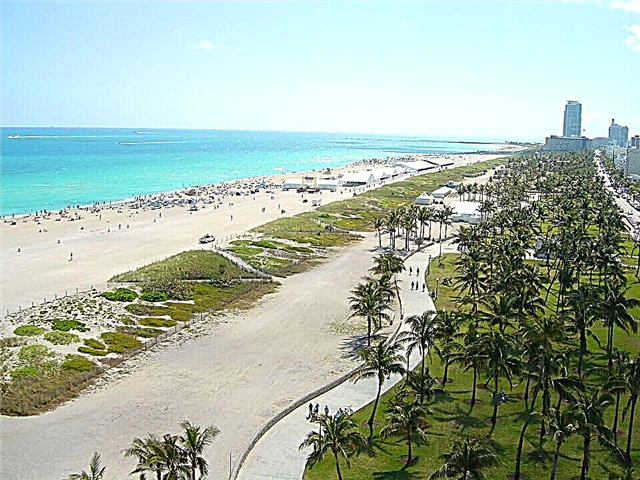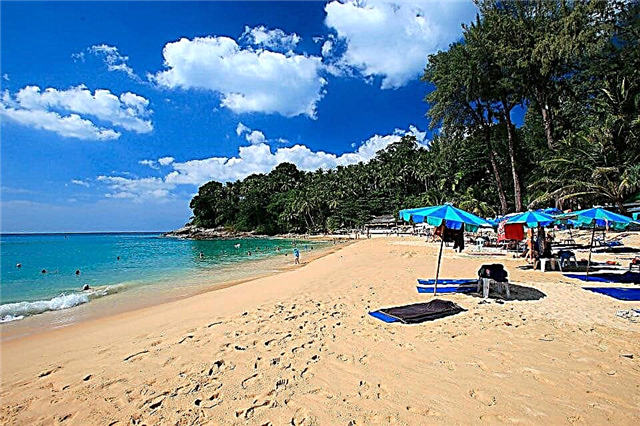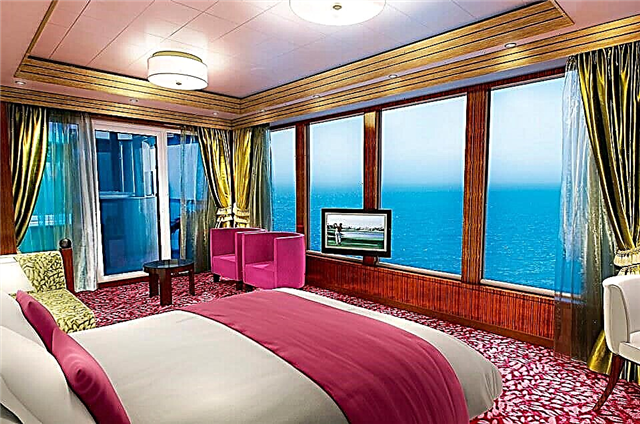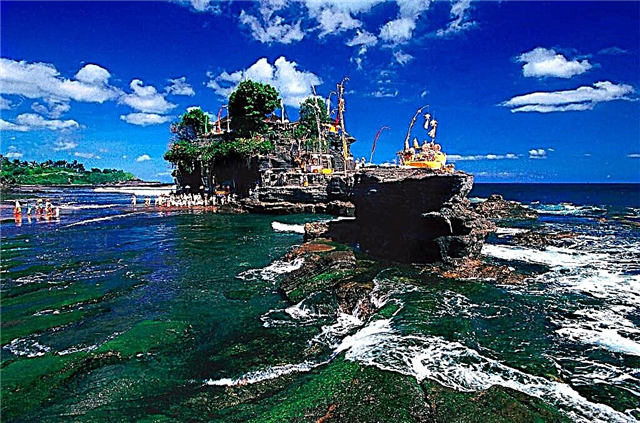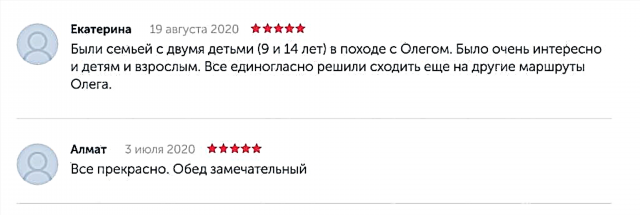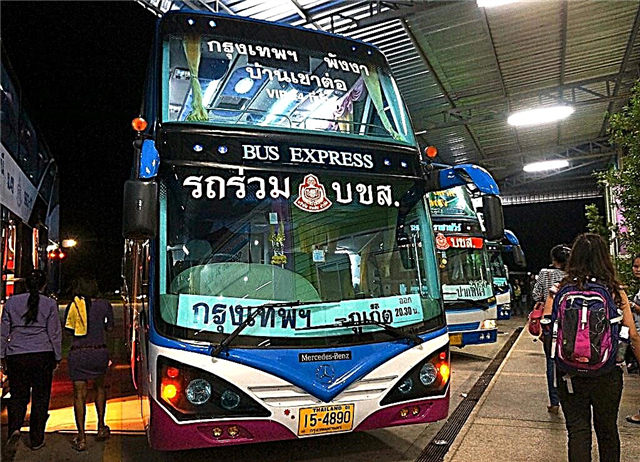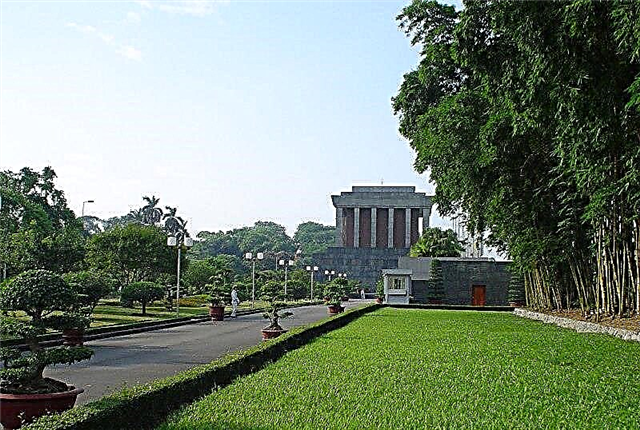There are not many countries in Northern Europe that can be reached from Russia by car, bus, or ferry. The sights of Finland are unique in their kind - you can go around them in two weeks of winter vacation. Guests who visit Santa Claus Village in winter often do not know that this country is no less interesting in summer. Ice sculptures and hotels in forest guards were invented in this country. Finland is a large city with a typical European culture and amazing architecture and, with attractions, sculptural masterpieces and museums of modern art. For sledding enthusiasts - the harsh and beautiful northern nature of Scandinavia with its thousand lakes, virgin forests and crystal waterfalls. A land of moomins, gothic castles, cathedrals and outdoor sculptures. And this is just a small list of places in Finland that are worth visiting, regardless of the season.
Santa Claus Village

If, on the eve of the New Year, from anywhere on Earth, write a letter with the address: "Arctic Circle, Lapland, to the Village of Grandfather Frost", it will certainly be delivered to a specific geographic point. Adults and children believe in miracles, because such a place really exists. This is the main attraction of Finland, which is remembered long before Christmas.
According to Finnish lore, the mythical character Joulupukki lived on the ears-like Korvatunturi hill near the Russian border. The official residence of Santa Claus is outside the city of Rovaniemi, 7 km to the north (2.5 km from the airport). You can get here by car on the E75 highway or by bus # 8 from the city. In fact, there are several official residences of Santa Claus, where mountains of letters of wishes are brought, but this is the place that is known to the whole world. The New Year sorcerer also visits the Mur-mur castle (near the Ranua zoo in Joulukka) or at the summer cottage in Kuusamo.
It is interesting! If the opportunity arises, visit other Santa residences with your children. They are in Sweden and Norway, in Belarus and the Russian Federation. There is also a more remote option - a house in Alaska. On the eve of Christmas, work is in full swing everywhere, preparations for the main holiday have been going on for a whole year. Santa Claus rests a little closer to spring, when all this joyful New Year's commotion is over.
Monument to Sibelius

There is an object in Helsinki that is unlike anything else. The singing monument on a hill in Taka-Töölö is the semantic accent of Jan Sibelius Park. It was built more than 45 years ago, in memory of the work of a talented musician. Jan Sibelius is known all over the world as a European composer of the late 19th - early 20th centuries. He was an innovator and experimenter, a bright outstanding personality who received recognition during his lifetime. Every Finn can sing at least one Sibelius melody.
The Academy of Music bears his name, streets and parks throughout the country are named after him. The singing monument amazes the imagination with its unusual design and originality. A strange "miracle-instrument" in the form of 600 pipes, like a church organ, singing in the wind, looks majestic and a little strange. But this structure is better not only to see, but also to listen - every time it is a new symphony of the wind.
Imatrankoski rapids

On summer evenings at 18:00, water is discharged at a hydraulic structure near Lake Saimaa to the music of Sibelius. This discharge can be seen only on the Vuoksa River - near the largest Imatrankoski rapids. Noisy waters rush down from an almost 20-meter height. Imatrankoski is located in the vicinity of the city of Imatra, it is the main attraction of the southeast of the country. The water cut a road in the Salpausselkä mountains, forming a chain of rocky rapids.
In the summer, there are many tourists in these places who are interested in a unique show. Once even Tsarina Catherine herself visited these places, touring the possessions of the Russian Empire in 1772. At that time, the inhabitants of this part of Finland were her loyal subjects. Later, Emperor Nicholas II organized the first reserve, which existed from 1842 to 1929.
The local castle hotel Valtionhotelli and the first railway contributed to the prosperity of the picturesque area. Times have changed, a dam was built here for a hydroelectric power station to provide the region with electricity. The waterfall became a slope - the urbanization of the twentieth century came into its own. Today, extreme lovers fly from an 18-meter height on a bungee, and tourists admire the tamed power of nature.
Sapokka water park

In the center of the Finnish city of Kotka, there is an interesting attraction - the Sapokka water park. It has everything for relaxation - landscape design and flowers, bizarre sculptures and intricate shadows, a waterfall and linden alleys. It's amazing how an ecologically clean island of nature is preserved in the center of the urban system.
The park is adjacent to the Sapokka Bay, shaped like a boot, hence the name. A noisy waterfall, ending with a system of small streams, forms a system of ponds, carefully cared for by the townspeople. The spring fragrance is replaced by lush summer vegetation, which is temporarily dressed with autumn colors, in the end for six months everything is hidden by the winter landscape.
The Sapokka Water Park is always crowded. Morning jogging for healthy lifestyle enthusiasts, small children frolicking under the supervision of parents, lone walkers and groups of tourists. In the evening, lovers flock here to finish their walk in one of the nearby cafeterias. Summer venues often host impromptu concerts of street musicians, festivals of folk bands and rock musicians.
Arktikum Museum

Arktikum is an amazing building in Rovaniemi, which houses a unique exhibition. Visitors can learn a lot about the peculiarities of life in the arctic climate. This building has a congress hall where international forms and conferences are held. In addition to museums, the building is regularly used for all kinds of congresses and conferences.
The building was built in 1997 according to the project of Danish architects in the form of a gallery or glass tube 172 meters long. A metal frame and tempered glass were all that was needed to bring the idea to life. The glass tunnel extends from Sevres to the south, with the main rooms in the underground part (inside the rock). The interior design of Arktikum used wood of Karelian birch and Scandinavian pine, deer skins and a local variety of granite.
You can talk a lot about the Arktikum exposition, but it's better to see it with your own eyes. Exhibition materials "Northern Crafts" tell about the history of the peoples of Lapland. These are ethnic costumes, models of wooden buildings of past centuries, the culture of life of reindeer herders, hunters and gold diggers. At the beginning of the 20th century, there was a fair in Rovaniemi, famous throughout Europe; it was reflected in books and documentary chronicles. Today she works on the eve of Christmas.

The “Changing Arctic” exposition has been operating since 2007 - this is the Northern Lights Theater, an ice cave and much more. Each visitor will feel like an employee of research stations or an ethnographer studying the cultural heritage of the peoples of Northern Europe. Exhibition materials "The Changing Arctic" is dedicated to the impact of global warming and human activity on the nature of Scandinavia.
You can get there along the E-4 highway, turning from the Rovaniemi railway station following the signs. Not far from the building there are several hotels, convenient parking and a pedestrian zone. Here you can stay for a few days to see all the city sights.
Esplanade Park

Esplanade Park (in Finnish Esplanadin puisto), colloquially "Espa", the most beautiful green area in Europe. It is easy to find in the Kaartinkaupunki area (the historical center of the capital). These are not just linden alleys with flower beds; in the 1830s, the best architect in the capital, Karl Ludwig Engel, worked on its development. Trees are aging, they are gradually being replaced with new plantings, and by 2027 all park specimens that have survived to this day will be completely replaced.
What this part of Helsinki will be like after that is not known. You can still enjoy the pristine beauty of an example of park culture of a bygone era. Here you can also see a monument to the famous Finnish poet. The first was erected a sculptural composition in honor of Ludwig Runeberg, later monuments to other Finnish writers were added. At the end of the park there is a market square where tourists enjoy freshly prepared fish and delicious sweets with coffee or mulled wine.
Temppeliaukio Church

The Lutheran Church, carved into the rock, is an amazing building, a unique Finnish landmark. You can walk here from the Kampi bus station - an object like a bunker in a rock is visible from afar. The church in the rock is the embodiment of the plan of the brothers-architects Suomalainen, Timo and Tuomio. Minor revision of the walls and shape of the hall after the explosion of basalt rock with the erection of a dome consisting of many windows.
Admission is paid, if you're lucky, you can listen to the church organ, excellent acoustics (Mstislav Rostropovich claimed that the best in the world). In the daytime, quiet music sounds, you can relax and think about something of your own. Local Protestants call this place "the bunker of anti-devil protection", the church is active. The legacy of the 60s of the last century is unlike anything else, nor is it like a church in its traditional sense.
Rather, the structure resembles a concert hall or a music hall set in a rock on Temple Square. This is the best place to relax between flights at the Kampi bus station. There are many souvenir shops and cafes near the property where you can buy assorted ice cream, hot mulled wine or coffee with local pastries (according to the season).
Sveaborg

The unique system of bastion structures Sveaborg or "Swedish Fortress", in Finnish Suomenlinna. The historical complex covers 8 small islands with a population of no more than 900 people. Today it is an administrative district not far from the capital of Finland, there is a museum and ancient buildings, the rest is residential quarters. The fortification system has protected the port of Helsingfors from the sea since the 18th century.
The names of the islands are difficult to remember, 5 of them are connected by bridges, isthmuses or sand spits:
- Lansi-Mustasaari
- Kustaanmiekka
- Susisaari
- Iso-Mustasaari
- Pikku-Mustasaari
Only 3 islands are isolated - Särkkä, Pormestarinluodot and Lonna. There is an Orthodox church (architect K. Ton), which belonged to the Russian garrison. You can get here by ferry, yacht or boat to see other historical sites. This is the main pier and the Royal Gate, bastions with guns and museums, a grotto, a tunnel and much more.
Olafsborg

Lake Castle, Olavinlinna Fortress, St. Olof Castle in eastern Finland are one and the same tourist attraction. Olafsborg or Olofsborg - there are still disputes over the name of the historical monument. The lake fortress was built by the Swedes to defend against artillery on the Russian-Swedish border. The fortified structure on a rocky island is surrounded by lakes Pihlajavesi and Haapavesi (Savonlinna municipality, southern province).
There was a settlement not far from the bay of Lake Saimaa, which acquired the status of the city of Nyuslott (Neishlot) in 1639, and the fortress was called Neishlotskaya. The fort has been preserved in its original form, it has not been touched by the hand of the vandals. In the 1890s, the castle and the tower, damaged by a gunpowder explosion, were partially restored. Today you can see interesting museum expositions here. From time to time Olofsborg organizes an opera festival, official events, scientific conferences and even wedding ceremonies with a medieval flavor are held here.
Abos castle

If you want to truly plunge into the atmosphere of the Middle Ages, undergo a knighting ceremony and try on armor, welcome to Abo Castle. You can get to the historic Turku fortress by bus or car. The tourist site is located outside the city, it was a Swedish estate at the mouth of the Aurajoki River. This place has many names, Swedish - Obo or Abo. At the end of the 13th century, the castle was founded at the behest of the Swedish king, on the occasion of the triumphant annexation of these lands to the possessions of the Swedish crown. By the middle of the 15th century, the castle was expanded and improved.
At that time, there was a whole administrative complex, and not just a rampart with a tower of a military garrison, as before. Here was one of the residences of the Swedish kings who paid visits to neighboring countries. After the fire in 1614, the buildings were not restored for a long time. There was a storehouse for grain and food, for some time it was used as a prison for prisoners of war. The building is located far from the capital. At the local restaurant, you can order a feast in the best traditions of the Middle Ages.
Häme castle

Several historical monuments have survived on the territory of Northern Europe, which have existed for about 700 years in their original form. Among them is a medieval fortress with the Häme castle complex, built in the 13th century. It began to be erected after the crusade of the Jarl of Sweden Birger - with the aim of uniting the local peoples and lands of the Swedish crown. Häme Fortress is an integral architectural and historical ensemble. It fits so well into the landscape, it seems that it literally grew out of the ground. The park complex of the Aulanko castle, military barracks and city gardens coexist very organically.
The architectural style of different eras can be traced in it - some extensions were erected much later. The fortress was assigned the most important administrative and political task - the stronghold of the Swedish monarchy for these rich lands taxed with tribute. She is mentioned in various historical documents, including the Tale of Bygone Years. This is a description of the campaign of the son of Yaroslav the Wise to the Tavastgus castle (aka Häme). After a chain of historical events, the lands with the Swedish castle were transferred to Finland.
Fortress of Lappeenranta

The old fortress of Lappeenranta is the lively residential area of the historic part of the modern city. Once a unique landmark in Southeast Finland, it was an important part of the fortification system. The complex included the fortresses of Hamina and Suomenlinna (Helsinki), the architectural design largely overlaps. The life of the modern capital leaves its mark. But thanks to the efforts of the city authorities, competently organized economic activities have saved this territory from the urbanization of the 21st century.
Once upon a time there was a small section of "wild" territory, where battles were often fought between the Russians and the Swedes. Thanks to the development of trade, after the construction of the Lappeenranta fortress, the area began to actively settle down. Today, the "bridge" between Finland and Sweden has lost its relevance. There are no wars with Russia, the old fortress is no longer stormed by the Finns, Swedes and Russians alternately. But the "old town" with its fortifications on a promontory near Lake Saimaa has become one of the most visited sites.
Atheneum

The Ateneum Art Museum is literally a Mecca for art lovers in Northern Europe. The name is a modification in honor of the goddess Athena, her statue is magnified at the entrance to the museum. The main exhibition is on the 3rd floor, where you can see the best works of Finnish masters. The canvases of Pekka Halonen and Axeli Gallen-Kallela, Albert Edelfelt and Hugo Simberg are of interest to art historians and tourists from different countries.The Athenaeum is only a part of the Finnish National Gallery; the association includes Kiasma and the Sinebrychoff Museum.
The collection of Finnish painting numbers over 4,000 canvases from different eras, from the Renaissance to modern art trends. The most talented architect of the time, Theodor Huyer, worked on the project. The decor of the interiors was thought out by Karl Eneas Sjöstrand, he is called "the father of Finnish sculpture". In addition to the impressive exposition, visitors are invited to relax in the spacious art cafe on the 1st floor.
The collection of the National Gallery has been steadily replenishing since 1887 - from the moment when Nicholas II gave part of his personal collection “for public viewing”. Today you can see little-known works and masterpieces of such artists as Marc Chagall, Van Gogh, Edvard Munch, Ilya Repin, Ivan Shishkin.
Moomin country

Valley of the Mummy Trolls - Scandinavian version of "Glade of Fairy Tales" or Disney amusement parks. Today, the island of mummy trolls is one of the ten best children's theme parks in the world. It is close to the town of Naantali on the Finnish coast. Moomin Doll can be reached with children on a miniature train, and this trip will be remembered for a lifetime. The tourist site is a dream come true for fans of the storyteller Tove Jansson.
It has everything that will delight children of all ages, including stairs, merry-go-rounds, turrets and slides. Every day, small performances are performed in the mini-theater, where good always triumphs over evil. The scenes are performed in Finnish, but the live performance of the actors is clear to everyone. According to the idea of the organizers of the park, Moomin-maser and Moomin-phaser live in the main turret. Greeting young visitors, fairy-tale characters walk along the paths, with whom everyone is photographed.

From here you can even send your friends a special postcard or photo anywhere in the world - in confirmation of your visit to an unforgettable amusement park. There are many points in this place where you can have a delicious lunch. A merry feast in the best traditions of the cuisine of the mummy trolls in the company of Snusmumrik, Baby Mu and other heroes of the tales of the Finnish writer. Guests will not be left without souvenirs and toys reminiscent of the happy moments of childhood.
Lemmenjoki National Park

There are few places left on Earth where the amazing northern nature has been preserved in its original form. The protected areas of the Lemmenjoki National Park are located in Lapland, a Finnish province. You can get here by the Helsinki - Inari train or the Rovaniemi - Inari bus route. Reserve area 2,850 km2 - the largest nature conservation association in Northern Europe. The central water body of the national park is Lemmenjoki, or the "river of love", where gold nuggets are found. The landscapes in different places of its course are impressive in variety.
Rapids and rock formations, forests and mountain ranges. Everywhere there is an abundance of mushrooms and berries that are allowed to be picked. In summer, gold is mined in 40 sections of the river territory. Tourists can watch the process, which does not harm nature. The territory of the reserve is bordered by the Norwegian national park Evreux-Anarjokka. Free spinning fishing is allowed in all lakes - whitefish and trout, grayling and brown trout.
Those traveling light can rent boats, sports and climbing equipment. Using the apps you can find hotels "forest huts" where you can charge smartphones, warm up, spend the night or wait out the bad weather. Many tourists from different European countries visit these places every year. For them, special trails with signs are equipped so as not to get lost in the wild forests. There are halt areas with dry closets and washstands, electric lighting and campfire sites.
Koli National Park

In Finland, national parks cover about 2.5% of the territory, which is 8150 sq. Km. One of the most famous nature reserves is Koli in Eastern Finland. It is a delightful land, celebrated by Juhani Aho, Jan Sibelius and Eero Jarnefelt. Thousands of townspeople flock here to relax in body and soul, to communicate with virgin nature. Century pine trees and majestic mountain ranges, the mirror-like surface of Lake Pielinen and many picturesque corners.
Nature lovers, having once visited these places, willingly return at other times of the year to appreciate the beauty of the Koli forests. Hiking and mountaineering, horseback riding and dog sledding are just a small list of outdoor activities for the townspeople. The local fauna numbers over 70 species, but animals and birds stay away from the hiking trails. Only reindeer are not afraid of anyone.
You can come to these places with the whole family, taking into account the age and state of health of the traveling groups. There is a service even for people with disabilities - there are assistants, instructors and guides. As in any national park, Koli has equipped places for cultural recreation - trails, camping sites, equipment rental points and eco-style hotels.
Oulanka National Park

The picturesque banks of the Oulanka River form the basis of the routes of the national park of the same name. A protected area of Finland, where whole families go on weekends to get away from general urbanization. The Oulanka River is a great option for those wishing to join new sports entertainment. Here kayaks are mastered - a special service with instructors is offered in some hotels. Great opportunities for hiking and cycling.

In winter, snowshoeing or skiing is a great weekend getaway. Stormy spring floods in Oulanka, bike rides to the red dolomite rocks or a 3-day trek to the rocky canyon. The choice depends on athletic training and equipment ownership. At any time of the year there is a wonderful opportunity to relax on one of the routes, starting from 80 km of the "Bear Circle" and up to kayaking on the seething rapids. Among the winter offers are short walks to the Kiutaköngäs rapids or small group hikes in the winter forest with an instructor.
The routes are marked so as not to get lost in the wilderness. Each has points for civilized recreation. Among the most interesting places tourists call the canyon and rapids of the Oulanka River, the Yuryavya waterfall, the rapids of the Kitka River, the Valtavaara and Rukatunturi hills.
Linnanmäki Amusement Park

There are not many places in the capital where you can spend the whole day. One of them is Linnanmäki, the most popular destination for city dwellers and those who are passing through Helsinki. Among the million guests, children are the most satisfied, most of the attractions are designed for them. Safe entertainment is designed around the world to bring joy to the guests of the metropolitan amusement park. Of course, it was not without the "Haunted House" and the roller coaster. There are numerous merry-go-rounds, a Ferris wheel, "Bouncy" (for those who love the thrill of free flight).

In the 4D cinema, you can relax after crazy electric car races. There is a train for the little ones and "cool" entertainment for the most desperate - "Lord of the Sky", "Lightning" and "Butter Churn". The Ghost Hotel, where invisible extras touch thrill seekers, is only admitted to young people and adults, while children ride free carousels. One of the new products is roller coasters with video helmets for those who want to experience virtual reality.
Särkänniemi amusement park

Entertainment is loved by adults and children - for their emotional coloring and unforgettable impressions. Each urban park has its own unique flavor, although some attractions have become "classics of the genre". When there is no other opportunity to relax with the whole family, the inhabitants of the "stone jungle" go to Särkänniemi. Finland's second most popular amusement park has been operating since 1975. The list of attractions is annually replenished with new offers for every taste.
If you want to cover “all 33 pleasures” during the weekend, you can “get lost” here all day. In these places there is also the highest observation tower in Scandinavia, from where you can jump on a bungee in summer. Those looking for a relaxing break will find many attractive facilities, including a mini farm with tame animals and a mini zoo. Interesting city Aquarium with an extensive collection, "Dog Hill" (fabulous village) and the Planetarium.
Weijo Ryongkyonen Sculpture Park

The strangest attraction of the country is a collection of sculptures lost in the vicinity of the village of Koitsanlahti. It's hard to imagine what inspired this large-scale work, but this is the brainchild of a local self-taught artist. The sculptures were made by Veiyo Ryonkkönen (1944-2010), after his life the park is not replenished, gradually falling into decay.
Tourists from different countries view more than 500 bizarre concrete figures. Mostly, these are people, but there are fairy-tale characters and animals, as well as heroes of the Scandinavian epic "Kalevala". Parikkala Sculpture Park is a kind of eerie open-air museum, where people stop by for new impressions and unusual photos. An amateur architect shared his childhood memories, dance and yoga lovers are warming up on another site. It is noticeable that many of the figures have real teeth (dentists provided them to the artist).
This gives more of a real-life feel, but makes Weiyo Ryonkkönen's characters surreal. The sculptural complex is best viewed in summer; in winter, phantasmagoric statues are covered with snow. The park can be reached by international flight No. 995 (bus from St. Petersburg to Joensu). Flights from St. Petersburg every other day, tickets at the ticket offices of the station and at the driver.
Lake Oulujärvi

Oulujärvi is the 5th largest water surface of the “land of 1000 lakes”. The lake is located in the center of the country - the Kainu region, it can compete in beauty and fish stocks with large waters of Scandinavia. Sports fishing championships are held here. After the competition, the contestants relax in cozy cottages, enjoying a real Finnish sauna and jogging in husky sleds. Although its bottom is not deeper than 7 meters, the species composition of the local fauna is impressive.
In the purest water rare and commercial fish species spawn, which grow to impressive sizes. Fish in small creeks can be caught even by hand, but the lake with large specimens of pike. The picturesque lake is not only a coveted pier for fishermen from all over Europe. Lovers of green tourism and those who want to take a break from the bustle of the capital come here to rest. Beautiful coastline, relic forest, endemic plants, rare mosses and lichens - all this is Lake Oulujärvi with many small islands, the largest is Manamansalo. This island is inhabited, there is a well-developed tourist service.
Lake Inarijärvi

Inari is a water area in the northeastern part of Lapland. This is one of the deepest lakes in Europe. Its uniqueness lies in the fact that the country's third largest lake is located in the Arctic Circle, at an altitude of 119 meters above sea level. On its banks there are several settlements with a special way of life of peoples who have learned to live in the conditions of the North. The water level in the lake and the rivers flowing from it (the Barents Sea basin) is regulated by an agreement signed in 1959 by Russia, Finland and Sweden.
Due to the region's energy needs, the Kaitakoski hydroelectric power plant was built here. For half a century, several similar structures were built in this area, forming the Cascade of the Pasvik HPPs (the Pasvik river). The polar lake is ice-bound from October-November to March-April; people fish here in summer and winter. Salmon and trout, pike and perch are found here. On this water area of 3318 islands, on Hautuumaasaari there is a cemetery with an altar of the ancient Sami (Ukko stone). Above the cleanest lake, you can ride a small seaplane or rent a boat.
Lake Saimaa

Not every geography teacher knows that the 4th largest lake in Europe is in Finland. But every Finnish fisherman remembers the location of Lake Saimaa - the southeast of the country. From it flows the Vuoksa River, flowing into Lake Ladoga, on the banks of which protected forests are spread. The flowing lake Saimaa is filled with the purest water, which is drunk without additional purification. Fishing is here all year round.
Foreign tourists are attracted by more than 13,000 islands, a rugged coastline, and the amazing beauty of the nature of the Scandinavian North. Yachts and boats, kayaks and canoes - everything you can get to the most remote corners of the lake surface and enjoy the beauty of the relict woodland. It is recommended to use the marked trails with signs or to create your own route with a navigator in the wilderness of Finland. Fish, mushrooms and berries are free here.
Seurasaari

The museum island in the western corner of the capital is one of those places that are written about on all tourist avenues. Residents of the populous Helsinki and numerous guests of the country go here on vacation. Visitors are offered an excursion to the house-museum of Urho Kekkonen, one of the former presidents of Finland (he led the construction for 25 years). He did a lot for the country and fought passionately for the nuclear-free status of Northern Europe. At the beginning of the last century, samples of rural buildings from different times were brought to this place from all over the country.
On the city island, a kind of open-air museum Seurasaari was formed. Time seems to have stood still, but modern life is pushing and hurrying it. It is interesting to see what real peasant houses and barns, windmills and stables looked like. You can cross from the center by boat to the island, which has been chosen by thousands of squirrels, take bus number 24 or walk along the bridge. The protected park is open all year round, newlyweds come here for weddings, this is an excellent place for family holidays.
Kvarken archipelago

There is a unique place on Earth where an unusual phenomenon was noticed for the first time - an increase in land area. This is the Kvarken archipelago, a testing ground for isostatic ground uplift. The land belongs to individuals, but their possessions are gradually growing due to the annual increase in the territory of the islands. Kvarken or "High Coast", the western coast of the Gulf of Bothnia, part of the Baltic Sea. The unique landscape with hills, bays and rugged coastline of many islands has been shaped by the unique phenomena of the North.
Periodic glaciation and melting of glaciers, the withdrawal of the coastline and the uplift of the islands formed the rocky coast and small islands. The territory was freed from relic ice only 9.6 thousand years ago. Since then, there has been an uplift of the territory of the archipelago, consisting of 5,600 islets (today the area is 194.4 thousand hectares). Of these, 15% are land, the rest is water area. It is interesting to see how the unique object of the joint Swedish-Finnish part of the World Heritage of Nature, protected by UNESCO, looks like.

